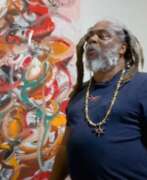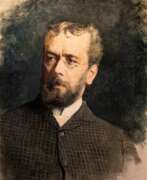Cartoonists 21st century


Quentin Saxby Blake is an English cartoonist, caricaturist, illustrator and children's writer. He has illustrated over 300 books, including 18 written by Roald Dahl, which are among his most popular works.[a] For his lasting contribution as a children's illustrator he won the biennial international Hans Christian Andersen Award in 2002, the highest recognition available to creators of children's books. From 1999 to 2001, he was the inaugural British Children's Laureate. He is a patron of the Association of Illustrators.


Raymond Redvers Briggs was a British writer, illustrator, and cartoonist.
A professional illustrator, he worked on the design of children's books. In the 1960s, Briggs discovered his talent and ability to combine words and pictures, using a form of strip cartooning that defined his later work.
Briggs is best known for his wordless book The Snowman, published in 1978, a sort of cute children's tale but with deep meaning. The animated and musical versions of this book are popular in Britain and are shown annually at Christmas.


Simon English is a contemporary british artist. He is best known for his large and small-scale 'painted drawings' in which he mingles his distinctive imagery and words. He moves lightly between tight draftsmanship and a playfully sloppy application of colour and line. Language is paramount with diaristic musings interspersed with song lyrics, poetry and humorous one-liners. Self-described as 'automatic', his work has the spontaneity of stream-of-consciousness, exploring themes of love and loss, as well as gay and popular culture. Simon English lives and works in London. He emerged on the London Art scene in 1994 with an exhibition of paintings at the Saatchi Gallery as part of Young British Art III. Simon has exhibited internationally at numerous institutions.


Paul Flora was an Austrian cartoonist, graphic artist, and illustrator known for his skill with pen and ink.
Flora's work has appeared in the famous New York Times and The Observer newspapers, and his drawings have graced the stamps of Liechtenstein and Austria. Paul Flora has been one of Europe's most famous illustrators since the 1960s.
He also produced books, films and sets.


Friederike Groß is a German painter, caricaturist and university teacher who lives and works as a freelance artist in Stuttgart.
Friederike Groß studied free graphics and art education with Dieter Groß at the State Academy of Fine Arts Stuttgart from 1984 to 1989. Since 1985, Friederike Groß has worked as a caricaturist for the Stuttgarter Zeitung.
From 2008 to 2014, Friederike Groß taught as a lecturer in drawing at the Swiss Federal Institute of Technology (ETH) in Zurich. Since 2013, she has held a professorship for illustration at the Berlin Technical University of the Arts (BTK) at the campus in Hamburg.


Dieter Huthmacher, born in 1947 in Pforzheim, Germany, is a renowned artist celebrated for his contributions to the world of fine art. His creative journey is marked by a diverse array of print graphics, where he skillfully blends color and form to create captivating works. Huthmacher's art is not only a reflection of his mastery in various techniques but also a testament to his deep understanding of artistic expression.
Throughout his career, Huthmacher has explored different themes and motifs, often experimenting with large formats and various color techniques. His works, primarily consisting of prints, have been featured in several auctions, indicating the consistent interest and value placed on his art in the collectors' market. Notable pieces like "Thalia," created around 1988, showcase his proficiency in color woodcut techniques and are representative of his artistic signature.
Dieter Huthmacher's works continue to be sought after, with auctions featuring over 25 graphic prints of various motifs, demonstrating his versatility and appeal in the art world. His creations have been presented in prestigious auction houses, resonating with collectors, auctioneers, and art enthusiasts alike.
For those interested in the world of art and antiques, particularly in the works of Dieter Huthmacher, staying informed about upcoming auctions and sales can be incredibly beneficial. By signing up for updates, you can receive timely information about new product sales and auction events related to Dieter Huthmacher's art, ensuring you never miss an opportunity to acquire a piece of his esteemed collection.


Sean Landers is an American artist. He is best known for using his personal experience as public subject matter and for utilizing diverse styles and media in a performative manner, and is especially known for his word art. His work encompasses many media: painting, sculpture, photography, drawing, writing, video and audio, and he uses humor and confession, gravity and pathos in it, blurring the lines between fact and fiction, reality and fantasy, sincerity and insincerity.


Nyoman Masriadi is a painter and a leading artist of the post-Suharto era in Indonesia. His works have gained a collectors base which includes prominent collectors in and around the region.
The visual imagery and narratives in his paintings are derived from keen and intelligent observations of social life and behavioural traits. His visual vocabulary is striking, continuously refreshing and contemporaneously relevant.


Markus Oehlen is a German artist and musician.
Markus Oehlen graduated from the Düsseldorf Academy of Fine Arts, where his mentor was Alfonso Hüppi. Oehlen was one of the main members of the German "New Wilde" (Neue Wilde) art movement, which flourished in the 1980s and was characterized by the use of punk style elements in opposition to the then prevalent minimalism.
Oelen is constantly refining the technique of his paintings and also working in parallel on sculptures and musical projects. His new works are increasingly influenced by the perceptual experiments of op-art with their interference of printed images, which emerge as lattice patterns from below and above the image layers. Alongside forms oriented towards a computer aesthetic, this brings elements of the avant-garde into his images. By rearranging the individual compositional elements of the canvas, Oelen creates surrealist still lifes, playing with the notion of chance and suggesting bizarre narratives.
Markus Oehlen has been a professor at the Academy of Fine Arts in Munich since 2002.


Manfred Oesterle was a German painter, graphic artist, caricaturist and sculptor. In 1948 he was able to achieve professional success in the first satirical post-war magazine "Das Waspennest", founded by Werner Finck and Thaddäus Troll. From 1952 to 1955, Oesterle worked as a caricaturist for “Nebelspalter”, Rorschach/Switzerland. From 1955 to 1967 Oesterle was a permanent employee and member of the editorial board of "Simplicissimus", Munich. With 223 covers, he was the most frequently printed cartoonist of the internationally renowned satirical magazine. For many years, his caricatures, which are outstanding in terms of craftsmanship and intellectual excellence, have also appeared in “Spiegel”, “Zeit”, “Stern”, “Quick”, “Focus”, the “Süddeutsche Zeitung”, the “Augsburger Allgemeine Zeitung”, the “ Südwestpresse” and “Unser Geld”. Oesterle impressed with its immensely broad spectrum. His keen powers of observation and his almost eidetic memory for people and situations shaped Oesterle's paintings and graphics, especially in oil paintings and portraits. Wall and ceiling paintings, glass windows and tapestries were designed and executed by him as well as sculptures, reliefs and mosaics. As a master of the line, he always looked for the characteristic in his motifs. His drawings are pointed and humorous, ironic and critical, but never offending.


Dan Perjovschi is a Romanian artist, cartoonist and journalist living and working in Bucharest, Romania.
Dan Perjovschi blends drawing, comics and graffiti, commenting on current political, social and cultural issues, sometimes with a touch of black humor. He started working as a press illustrator back in the 1990s and has gained a lot of experience over the years. He plays an active role in the development of civil society in Romania, serving as editor of Revista 22, a cultural magazine, as well as producing his own publication, Gazeta Dana Perjovschi. Perjovschi's works are often printed and used during protests, as they reflect current social and civic issues.
In the last 10 years, in addition to drawing on paper, he has begun to use chalk and marker on the walls of buildings and exhibition spaces, drawing with great freedom even on the floor, walls and windows. In 2009, Dan Perjovschi created his first permanent exhibition at the Czech National Library of Technology in Prague. It consists of 200 monumental drawings on the concrete walls of the main atrium of the building. Dan Perjovschi is the winner of many international awards.


Hans Reiser is a German surrealist artist and caricaturist who lives and works in Reichersboerne.
Hans Reiser studied at the Academy of Fine Arts in Munich and has been drawing weekly cartoons for the Telzer Kurier since 1970. His work has also been published in many newspapers and magazines. Since 1979, the artist has participated in numerous exhibitions at home and abroad.


Dorothea Schulz is a German artist and graphic artist.
She reveals etymologies, finds pleasure in bar chatter and images, and discovers the Last Judgment both in pubs and in institutions of federal justice.
For about ten years now, Dorothea Schulz has been predominantly concerned with comprehension and communication, listening and its visual processing. The artist creates her so-called listening drawings during conversations that she accidentally hears or in which she herself actively participates. Snippets of speech are mixed with small, sometimes grotesque figurative drawings to create documents of spoken language that expose both the everyday use of language and its associative processing in the act of communication.
Dorothea Schulz became known to a wider audience after her participation in the exhibition Funny Cuts (2004) at the Staatsgalerie Stuttgart.


Ronald William Fordham Searle was an English artist and satirical cartoonist, comics artist, sculptor, medal designer and illustrator. He is perhaps best remembered as the creator of St Trinian's School, a fictional all-girls school known for its unruly students and mischievous antics, and for his collaboration with Geoffrey Willans on the Molesworth series. His professional career begins with his documentation of the brutal camp conditions of his period as a prisoner-of-war of the Japanese in World War II in a series of drawings. Most of these drawings appear in his 1986 book, Ronald Searle: To the Kwai and Back, War Drawings 1939–1945. In the book, Searle also wrote of his experiences as a prisoner. At least one of his drawings is on display at the Changi Museum and Chapel, Singapore, but the majority of his originals are in the permanent collection of the Imperial War Museum, London, along with the works of other POW artists. Searle produced an extraordinary volume of work during the 1950s, including drawings for Life, Holiday and Punch.[8] His cartoons appeared in The New Yorker, the Sunday Express and the News Chronicle. After moving to Paris in 1961, he worked more on reportage for Life and Holiday and less on cartoons. He also continued to work in a broad range of media and created books (including his well-known cat books), animated films and sculpture for commemorative medals, both for the French Mint and the British Art Medal Society. Searle did a considerable amount of designing for the cinema.


Jean-Jacques Sempé was a French cartoonist. He is known for the series of children's books he created with René Goscinny, Le Petit Nicolas, and also for his poster-like illustrations, usually drawn from a distant or high viewpoint depicting detailed countrysides or cities. For decades, he created covers for The New Yorker.


Karel Trinkewitz was a German-Czech artist, cartoonist and writer.
Karel's family was persecuted in the 1930s and 40s in Bohemia and Germany due to racial persecution, and as a half-Jew it was difficult for him to get an education at all. After World War II, Karel Trinkewitz worked in the Czech Republic for ten years as a writer, graphic artist and cartoonist, and from 1961 also as an editor of various cultural magazines. Shortly after August 21, 1968, as an active participant in the Prague Spring, he lost his job and eventually, after political unrest and relocations, had to move permanently to Germany.
In painting Trinkewitz was fascinated by the work of Salvador Dali, he also practiced calligraphic drawing and collage. In general, collage is a typical and basic creative expression for him.
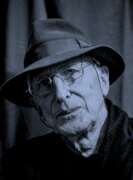

Jean-Thomas "Tomi" Ungerer was an Alsatian artist and writer. He published over 140 books ranging from children's books to adult works and from the fantastic to the autobiographical. He was known for sharp social satire and witty aphorisms. Ungerer is also famous as a cartoonist and designer of political posters and film posters.
Ungerer received the international Hans Christian Andersen Medal in 1998 for his "lasting contribution" as a children's illustrator.
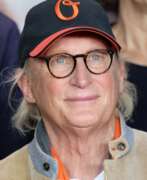

Otto Gerhard Waalkes is a German comedian, cartoonist, actor (including voice actor), musician, director and screenwriter. He has won many prizes and awards, among them the Order of Merit of the Federal Republic of Germany.
The little elephant Ottifant, which he invented, became the symbol of Otto Walkes' art and also the character for a series of comics and cartoons.
In the late 1970s and early 1980s Valckes turned his attention to comedy, appearing on stage and on television. He became known for his wry humour and his ability to create humorous characters and voices. His performances often include a mixture of stand-up comedy, skits and musical numbers.
Wallkes has also had a successful career in film and television. He has appeared in numerous German films. He also provided the voice for several animated films.
Otto Gerhard Wallkes is a well-known philanthropist, supporting various charities in Germany and around the world.
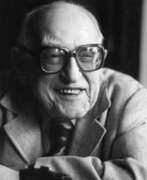

Boris Yefimovich Yefimov (Russian: Бори́с Ефи́мович Ефи́мов), a Soviet-Russian political cartoonist, left an indelible mark on the art of caricature with a career that spanned over nine decades. Born in Kiev, Yefimov grew up in a Jewish family, eventually changing his surname during the turbulent times of the Russian Civil War to conceal his Jewish origins. His early life was shaped by significant historical upheavals, including the First World War and the Russian Revolution, events that deeply influenced his work and perspectives.
Yefimov gained fame for his biting political cartoons that critiqued Adolf Hitler and the Nazis, contributing significantly to Soviet propaganda efforts during the Second World War. His caricatures were not only a source of morale for the Soviet people but were also recognized by Stalin, who personally spared Yefimov from purges that affected many of his contemporaries, including Yefimov's own brother. Despite the controversial aspects of his relationship with the Soviet regime, Yefimov's artistry and wit in critiquing political figures and events earned him widespread acclaim.
His contributions were recognized with numerous awards, including the Stalin Prizes and the title of People's Painter of the USSR. Yefimov's legacy is preserved in his extensive body of work, which includes over 70,000 works, showcasing his unparalleled skill in using humor and satire to comment on the political landscape of his time.
For collectors and experts in art and antiques, Boris Yefimov's works offer a unique glimpse into the historical and political zeitgeist of the 20th century. To stay updated on new product sales and auction events related to Boris Yefimov, sign up for updates. This subscription will ensure you're informed about the latest opportunities to own a piece of this remarkable artist's legacy.




